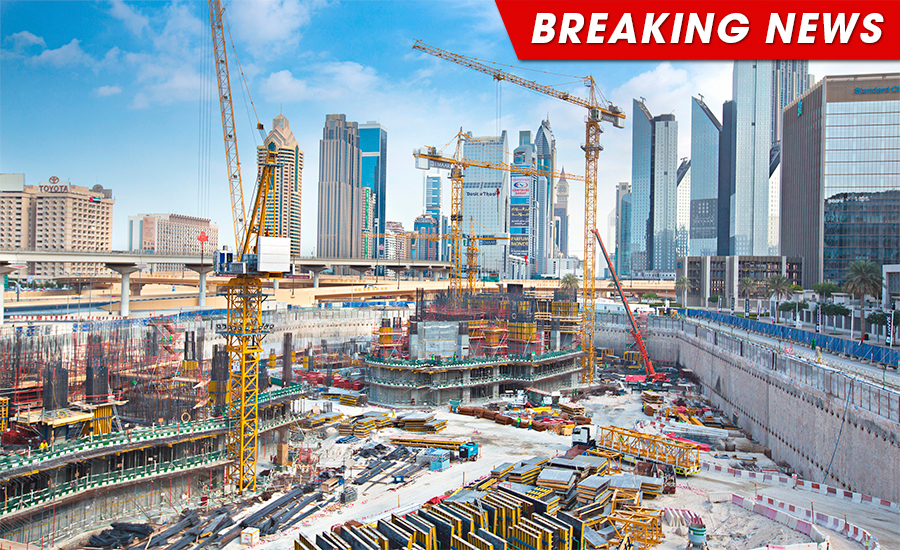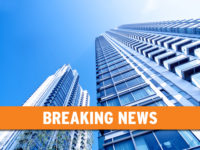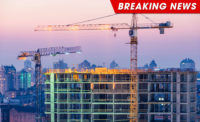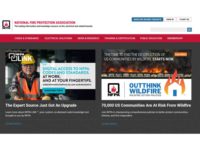Owens Corning Spotlights Strategies to Support Life Safety

As Fire Prevention Week is observed from October 4-10, Owens Corning Thermafiber is spotlighting three strategies to help architects support a higher level of safety in commercial buildings. The recommendations come at a time when the western U.S. is experiencing historic wildfires and many parts of the Midwest are under burn bans.
Angie Ogino, Technical Services Leader at Owens Corning Thermafiber and Vice President of the International Firestop Council (IFC) and Fire Safe North America (FSNA), recommends three strategies to support passive life safety efforts in commercial buildings:
- Specify Mineral Wool in the Exterior Wall Assembly: Mineral wool, tested specifically for perimeter fire containment (PFC) and continuous insulation (ci), provides fire resistance to the exterior wall assembly. Mineral wool for the perimeter application has demonstrated fire resistance in testing at temperatures exceeding 2000°F (1,093°C). Such performance is critical in high-rise structures and in buildings, such as hospitals, where egress may be more difficult for occupants.
In continuous insulation applications, architects must balance the International Building Code (IBC) requirement for non-combustible wall construction with the energy code requirement that buildings be wrapped in air/water-resistive barriers. These exterior claddings are often comprised of combustible materials. When a building’s enclosure is wrapped in combustible materials – for example, a combustible water-resistant barrier, or an aluminum composite or high-pressure laminate cladding – specifying mineral wool insulation may help assemblies pass the NFPA 285 fire test and protect life safety.
High-profile fires such as the 2005 Windsor Tower fire in Madrid, Spain, demonstrate why curtain walls should be protected to limit fire and smoke spread at joints between floors and exterior walls. As part of a building’s PFC system, mineral wool can limit the “leapfrog” effect. This term refers to when fire ascends a building by breaking out vision glass on one floor and leaping up a building’s exterior as the break-out effect is perpetuated floor by floor.
- Review Engineering Judgements and Use UL/Intertek-Approved Mineral Wool per E2307: Subtle variances in PFC assembly design may affect building performance in the event of a fire. The quality of engineering judgments (EJ), such as referencing a tested system that closely resembles the project details, can provide guidance in specifying the PFC assembly.
When a new building design or application deviates from a tested PFC system, the Thermafiber Insolutions® team can provide guidance based on years of testing and experience with assemblies around the globe. Over the past 50 years, Owens Corning® Thermafiber® has compiled an extensive library of tested assemblies to support architects in specifying components for PFC assemblies. Any PFC assembly decision should be based on a UL/Intertek approved system and include mineral wool tested to ASTM E2307 - 20, Standard Test Method for Determining Fire Resistance of Perimeter Fire Barriers Using Intermediate-Scale, Multi-story Test Apparatus.
- Specify building materials with the U.S. SAFETY Act Designation: While climate change is driving historic wildfires, sadly, acts of terrorism can also lead to fire. Following the tragic events of September 11, 2001, the U.S. Congress established the Support Anti-Terrorism by Fostering Effective Technologies (SAFETY) Act to help keep potentially life-saving technologies in the marketplace. Under the auspices of the Department of Homeland Security, the SAFETY Act limits liability for claims resulting from an act of terrorism. The Act applies to a wide range of building professionals, including architects, engineers, contractors, curtain wall manufacturers, and building owners. In 2017, Owens Corning became the first insulation manufacturer to be publicly listed with the Department of Homeland Security as having technology carrying the SAFETY Act designation.
While Fire Prevention Week is an annual observance, the safety threat posed by fire knows no seasonality. A series of high-profile fires in recent years has raised the question of whether fire-risk maps, zoning, and building codes should be reevaluated. An article in the September 12, 2020 issue of The Economist reports, “Fire-risk maps and zoning, which determine who must follow building codes, are in desperate need of a rethink. Among other things, they consider urbanized areas ‘unburnable,’ which ignores science showing that the majority of buildings catch fire when flying embers are blown a mile or more away from the flaming vegetation.”
While code changes take time, architects can introduce practices that support a life safety strategy into today’s designs. Three effective strategies to support life safety are 1: Specify mineral wool; 2: Review engineering judgements and choose an assembly tested to E2307; and 3: Specify materials carrying the U.S. SAFETY Act designation.
Looking for a reprint of this article?
From high-res PDFs to custom plaques, order your copy today!





